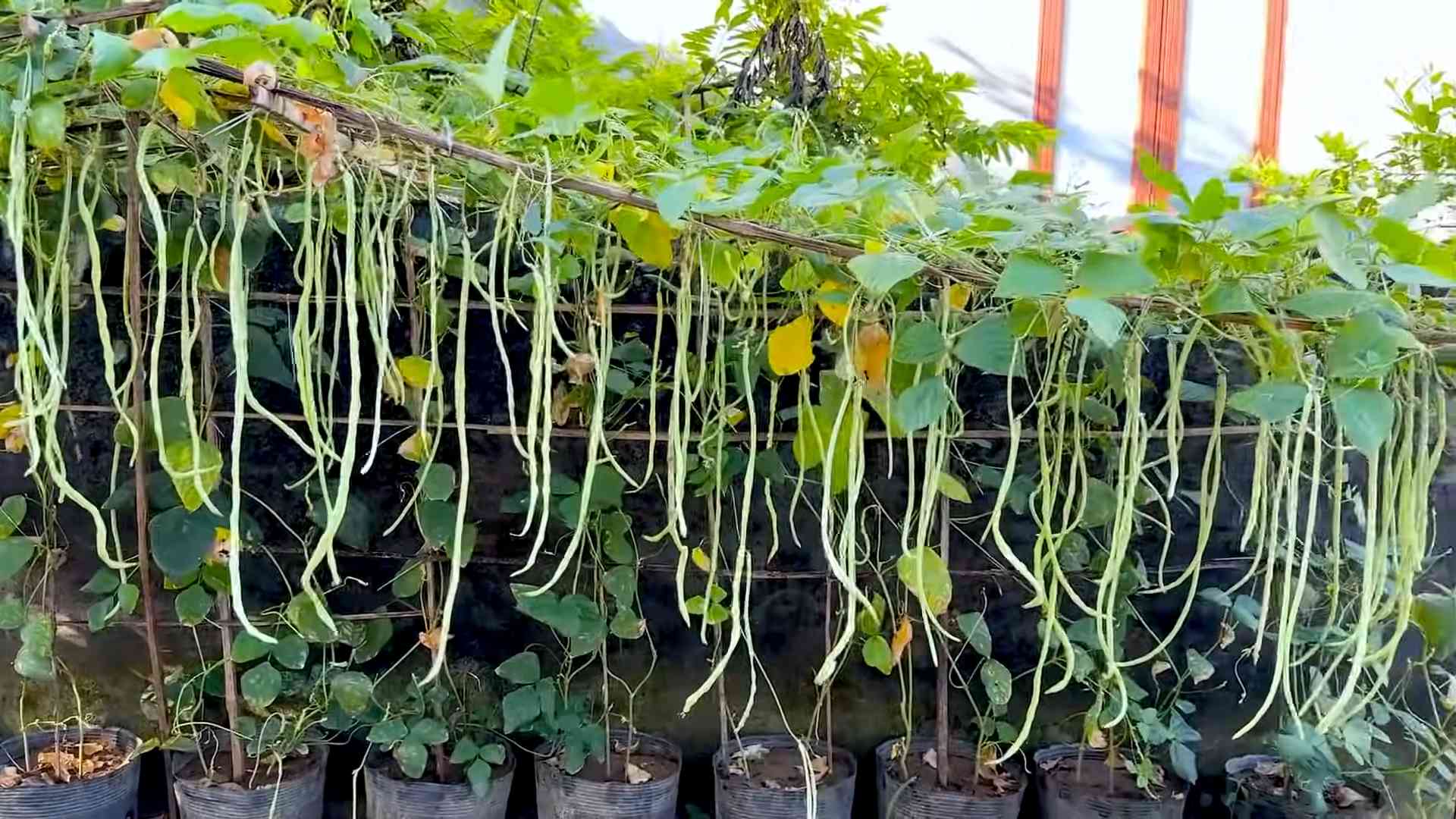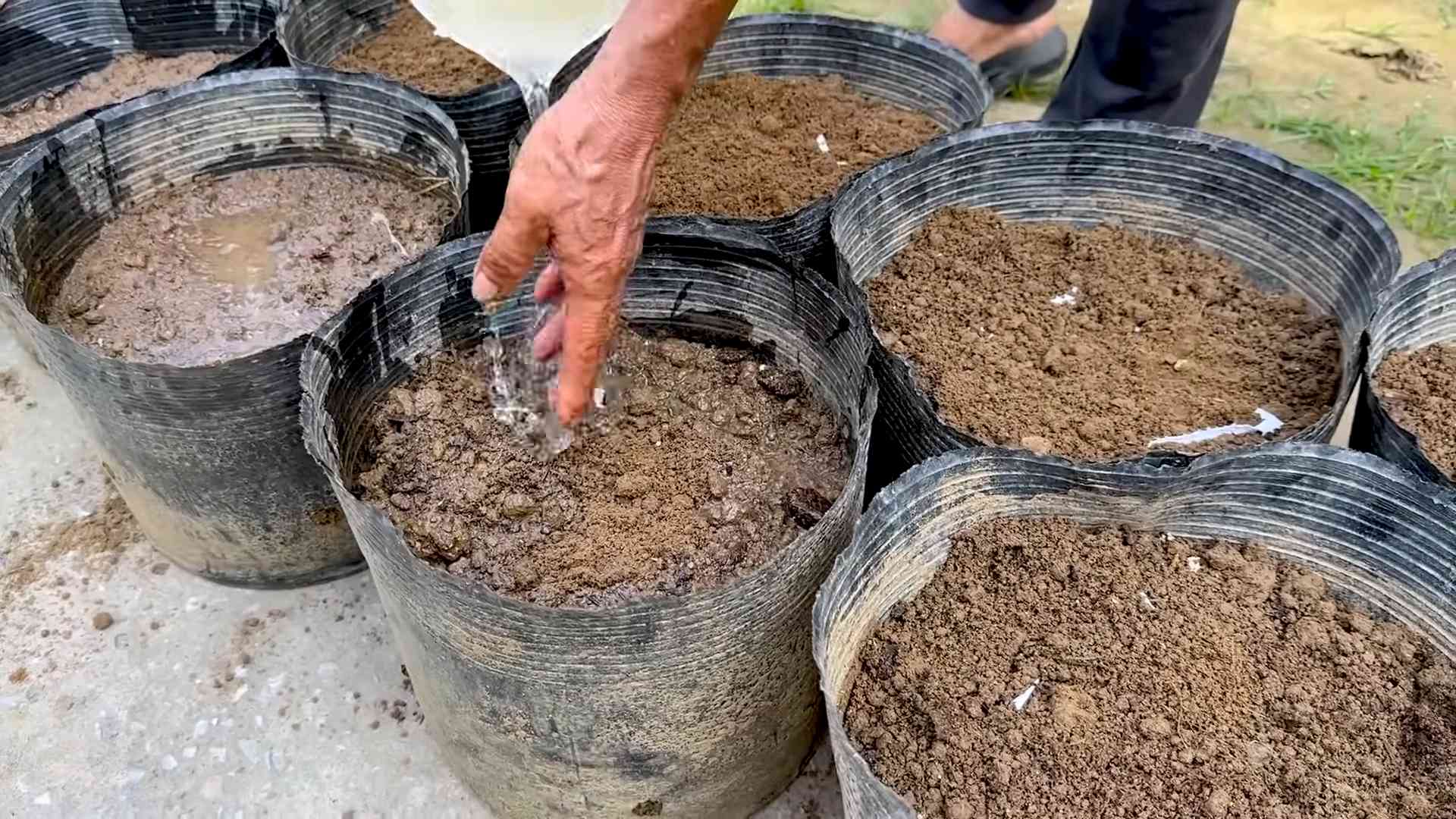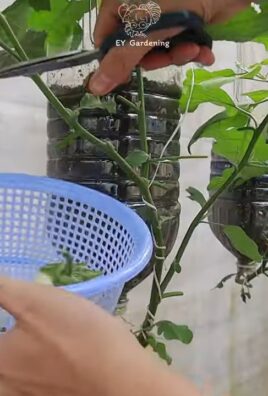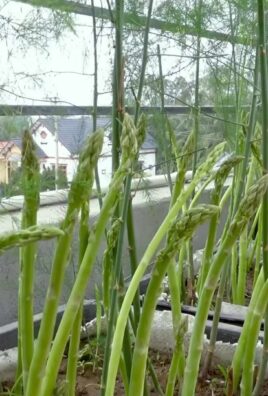Yardlong Bean Growing Tips: Unlock the secrets to bountiful harvests right in your own backyard! Have you ever dreamt of harvesting beans so long they practically touch the ground? Well, dream no more! This DIY guide is your passport to cultivating these fascinating and delicious legumes with ease.
The yardlong bean, also known as the asparagus bean or Chinese long bean, isn’t just a culinary delight; it’s a plant with a rich history, deeply rooted in Asian cultures. For centuries, it has been a staple ingredient, adding a unique texture and flavor to countless dishes. But you don’t need to travel to Asia to enjoy these incredible beans.
I know what you’re thinking: “Growing yardlong beans sounds complicated!” But trust me, it’s not. With the right yardlong bean growing tips and a little bit of know-how, you can transform your garden into a bean-growing paradise. This article will provide you with simple, step-by-step instructions, clever hacks, and insider secrets to ensure your yardlong beans thrive. Imagine the satisfaction of harvesting your own fresh, flavorful beans, knowing you nurtured them from seed to table. Plus, growing your own food is a fantastic way to save money, eat healthier, and connect with nature. So, let’s get started and discover the joy of growing your own yardlong beans!

Growing Yardlong Beans: A DIY Guide to Bountiful Harvests
Hey there, fellow gardening enthusiasts! I’m so excited to share my secrets to growing those incredibly long and delicious yardlong beans. These beans, also known as asparagus beans or Chinese long beans, are a fantastic addition to any garden, offering a unique flavor and impressive visual appeal. Trust me, once you get the hang of it, you’ll be harvesting armfuls of these beauties!
Choosing the Right Variety and Location
Before we dive into the nitty-gritty, let’s talk about variety and location. Selecting the right variety for your climate and finding the perfect spot in your garden are crucial for success.
* Variety Selection: There are several yardlong bean varieties available, each with slightly different characteristics. Some popular choices include ‘Red Noodle,’ ‘Chinese Red Noodle,’ and ‘Orient Wonder.’ I personally love ‘Red Noodle’ for its vibrant color and excellent flavor. Research which varieties thrive in your region and choose one that suits your taste.
* Sunlight: Yardlong beans are sun-worshippers! They need at least 6-8 hours of direct sunlight each day to flourish. Choose a location in your garden that receives ample sunlight throughout the day.
* Soil: Well-drained soil is essential. Yardlong beans don’t like soggy feet. Amend your soil with compost or other organic matter to improve drainage and fertility. A slightly acidic to neutral pH (around 6.0-7.0) is ideal.
* Support System: These beans are climbers! They need a sturdy trellis, fence, or other support structure to grow vertically. I’ve used everything from bamboo poles to cattle panels with great success.
Step-by-Step Planting Guide
Now, let’s get our hands dirty! Here’s a detailed guide to planting your yardlong beans:
1. Prepare the Soil: Start by clearing the planting area of any weeds, rocks, or debris. Loosen the soil to a depth of at least 12 inches. Incorporate plenty of compost or well-rotted manure to enrich the soil and improve drainage. I usually add a generous layer of compost, about 2-3 inches thick, and mix it in thoroughly.
2. Install the Support Structure: Before planting, set up your trellis or support system. This will prevent you from disturbing the plants later. Make sure the structure is strong enough to support the weight of the mature vines. I prefer using a trellis made of sturdy metal or wood.
3. Sow the Seeds: You can either direct sow the seeds in the garden or start them indoors. I usually prefer direct sowing, as it avoids transplant shock. Sow the seeds about 1 inch deep and 2-3 inches apart along the base of the trellis. If you’re starting seeds indoors, sow them in peat pots or biodegradable containers about 3-4 weeks before the last expected frost.
4. Water Gently: After sowing, water the soil gently to avoid disturbing the seeds. Keep the soil consistently moist but not waterlogged. I use a watering can with a gentle rose head to avoid washing away the seeds.
5. Thin Seedlings (If Necessary): If you direct sowed the seeds and they all germinate, you’ll need to thin them out. Once the seedlings have a few true leaves, thin them to about 6-8 inches apart. Choose the strongest, healthiest seedlings to keep.
6. Mulch Around the Plants: Apply a layer of mulch around the base of the plants to help retain moisture, suppress weeds, and regulate soil temperature. I like to use straw or shredded leaves as mulch.
Caring for Your Yardlong Beans
Once your yardlong beans are planted, it’s time to provide them with the care they need to thrive.
* Watering: Water regularly, especially during dry spells. Yardlong beans need consistent moisture to produce long, healthy pods. Aim for about 1 inch of water per week. I usually water deeply once or twice a week, depending on the weather.
* Fertilizing: Fertilize your yardlong beans every 2-3 weeks with a balanced fertilizer. Look for a fertilizer with an NPK ratio of around 10-10-10. Avoid over-fertilizing, as this can lead to excessive foliage growth at the expense of pod production. I prefer using a liquid fertilizer diluted to half strength.
* Weeding: Keep the area around your yardlong beans free of weeds. Weeds compete with the beans for nutrients and water. Hand-pull weeds regularly or use a hoe to cultivate the soil.
* Training the Vines: As the vines grow, gently guide them up the trellis or support structure. This will help them climb properly and maximize sunlight exposure. I usually check the vines every few days and gently weave them through the trellis.
* Pest and Disease Control: Keep an eye out for common bean pests such as aphids, bean beetles, and spider mites. Treat infestations promptly with insecticidal soap or neem oil. Prevent fungal diseases by ensuring good air circulation and avoiding overhead watering. I regularly inspect my plants for any signs of pests or diseases and take action immediately if I spot anything.
Harvesting Your Bounty
The most rewarding part of growing yardlong beans is, of course, harvesting your delicious crop!
* Harvest Time: Yardlong beans are typically ready to harvest about 60-80 days after planting. The pods should be long, slender, and firm. Harvest them when they are about 12-18 inches long, before the seeds inside become too large and tough.
* Harvesting Technique: Use scissors or pruning shears to cut the pods from the vine. Be careful not to damage the plant. Harvest regularly to encourage continued production. I usually harvest every 2-3 days during peak season.
* Storage: Freshly harvested yardlong beans are best eaten immediately. However, you can store them in the refrigerator for up to a week. Place them in a plastic bag or container to prevent them from drying out. You can also freeze yardlong beans for longer storage. Blanch them in boiling water for 2-3 minutes, then cool them in ice water before freezing.
Troubleshooting Common Problems
Even with the best care, you might encounter some challenges when growing yardlong beans. Here are some common problems and how to address them:
* Poor Germination: If your seeds aren’t germinating, make sure the soil is warm enough (at least 65°F). Also, ensure that the soil is consistently moist but not waterlogged. You can also try soaking the seeds in water for 24 hours before planting to improve germination rates.
* Yellowing Leaves: Yellowing leaves can indicate a nutrient deficiency. Fertilize your plants with a balanced fertilizer to provide them with the nutrients they need. It could also be a sign of overwatering, so make sure your soil is well-draining.
* Lack of Pod Production: If your plants are growing well but not producing pods, it could be due to a lack of pollination. Yardlong beans are self-pollinating, but sometimes they need a little help. Gently shake the vines to help distribute pollen. Also, ensure that the plants are receiving enough sunlight and water.
* Pest Infestations: As mentioned earlier, keep an eye out for common bean pests. Treat infestations promptly with insecticidal soap or neem oil. You can also try attracting beneficial insects to your garden to help control pests naturally.
Enjoying Your Harvest
Now that you’ve harvested your yardlong beans, it’s time to enjoy them! These beans are incredibly versatile and can be used in a variety of dishes.
* Stir-fries: Yardlong beans are a classic ingredient in stir-fries. They add a delicious crunch and a slightly sweet flavor.
* Salads: Add chopped yardlong beans to salads for a refreshing and nutritious boost.
* Soups and Stews: Yardlong beans can be added to soups and stews for extra flavor and texture.
* Grilled or Roasted: Toss yardlong beans with olive oil, salt, and pepper, and grill or roast them for a simple and delicious side dish.
* Pickled: Pickle yardlong beans for a tangy and flavorful condiment.
I hope this guide has inspired you to grow your own yardlong beans. With a little care and attention, you’ll be rewarded with a bountiful harvest of these unique and delicious beans. Happy gardening!

Conclusion
So, there you have it! Mastering the art of growing yardlong beans doesn’t require a green thumb blessed by the gardening gods. It’s about understanding their needs, providing the right support, and implementing these simple yet effective DIY tricks. We’ve explored how to create the perfect trellis system, optimize watering schedules, and even concoct natural pest control solutions, all designed to maximize your yield and minimize your effort.
Why is this a must-try? Because fresh, homegrown yardlong beans are simply incomparable to anything you can find at the grocery store. The vibrant flavor, the satisfying crunch, and the sheer pride of harvesting something you nurtured from seed – it’s an experience that elevates any meal. Plus, you’ll be reducing your carbon footprint by sourcing your food locally, right from your own backyard!
But the beauty of gardening lies in experimentation. Feel free to adapt these techniques to suit your specific climate and growing conditions. For example, if you live in a particularly hot region, consider providing afternoon shade for your yardlong beans to prevent sunscald. You could also try companion planting with herbs like basil or rosemary, which are known to deter pests and attract beneficial insects. Another variation is to experiment with different trellis designs. While we focused on a simple A-frame, you could explore teepee trellises or even train your yardlong beans along a fence. The possibilities are endless!
And don’t forget about the seeds! Save seeds from your best-performing plants each year to develop a strain that’s perfectly adapted to your local environment. This is a fantastic way to ensure a bountiful harvest year after year.
Ultimately, the key to successful **yardlong bean growing** is observation and adaptation. Pay attention to your plants, learn from your mistakes, and don’t be afraid to try new things. We’re confident that with these DIY tricks in your arsenal, you’ll be enjoying a delicious and abundant harvest of yardlong beans in no time.
Now, it’s your turn! We encourage you to put these tips into practice and share your experiences with us. Did you find a particular trellis design that worked exceptionally well? Did you discover a natural pest control solution that was incredibly effective? We want to hear all about it! Share your photos, stories, and insights in the comments below. Let’s build a community of yardlong bean enthusiasts and learn from each other’s successes (and failures!). Happy gardening!
Frequently Asked Questions (FAQ)
What is the best time to plant yardlong beans?
The ideal time to plant yardlong beans is after the last frost when the soil has warmed to at least 65°F (18°C). Yardlong beans are warm-season crops and are sensitive to cold temperatures. Planting too early can stunt their growth or even kill them. In most regions, this typically falls between late spring and early summer. If you live in a warmer climate with a longer growing season, you may be able to plant a second crop in late summer for a fall harvest. To determine the best planting time for your specific location, consult your local extension office or gardening resources. They can provide information on average frost dates and optimal planting windows.
How much sunlight do yardlong beans need?
Yardlong beans thrive in full sun, requiring at least 6-8 hours of direct sunlight per day. Adequate sunlight is crucial for photosynthesis, which fuels the plant’s growth and development. Without enough sunlight, yardlong beans will produce fewer flowers and pods, resulting in a smaller harvest. Choose a planting location that receives ample sunlight throughout the day. If you live in an area with intense afternoon sun, consider providing some afternoon shade to prevent sunscald, especially during the hottest months.
What type of soil is best for growing yardlong beans?
Yardlong beans prefer well-drained, fertile soil with a pH between 6.0 and 7.0. Good drainage is essential to prevent root rot, a common problem in waterlogged soils. Before planting, amend your soil with compost or other organic matter to improve its fertility and drainage. Compost also helps to retain moisture and provide essential nutrients to the plants. If your soil is heavy clay, consider adding sand or perlite to improve drainage. A soil test can help you determine the pH of your soil and identify any nutrient deficiencies. Amend the soil accordingly based on the test results.
How often should I water my yardlong beans?
Yardlong beans need consistent moisture, especially during flowering and pod development. Water deeply and regularly, aiming to keep the soil consistently moist but not waterlogged. The frequency of watering will depend on your climate, soil type, and the stage of plant growth. In general, water deeply once or twice a week, or more often during hot, dry weather. Use a soaker hose or drip irrigation to deliver water directly to the roots, minimizing water loss through evaporation and reducing the risk of fungal diseases. Avoid overhead watering, as it can wet the foliage and create a favorable environment for disease development.
What are some common pests and diseases that affect yardlong beans?
Yardlong beans are susceptible to several pests and diseases, including aphids, bean beetles, spider mites, and fungal diseases like powdery mildew and anthracnose. Regularly inspect your plants for signs of pests or diseases. Early detection is crucial for effective control. For aphids and spider mites, try spraying the plants with a strong stream of water or using insecticidal soap. Bean beetles can be handpicked or controlled with neem oil. To prevent fungal diseases, ensure good air circulation around the plants, avoid overhead watering, and apply a fungicide if necessary. Companion planting with herbs like basil or rosemary can also help to deter pests.
How do I know when yardlong beans are ready to harvest?
Yardlong beans are typically ready to harvest about 60-70 days after planting. The pods should be long, slender, and firm, but not overly mature or tough. Harvest the beans when they are about 12-18 inches long, depending on your preference. Use scissors or pruning shears to cut the pods from the plant, being careful not to damage the vines. Regular harvesting encourages the plant to produce more pods. Overripe beans will become tough and less flavorful, so it’s important to harvest them at the right stage of maturity.
Can I grow yardlong beans in containers?
Yes, yardlong beans can be successfully grown in containers, provided you choose a large enough container and provide adequate support. Select a container that is at least 12 inches in diameter and depth. Fill the container with a well-draining potting mix and provide a sturdy trellis or support structure for the vines to climb. Water regularly and fertilize every few weeks with a balanced fertilizer. Container-grown yardlong beans may require more frequent watering and fertilization than those grown in the ground. Choose a sunny location for your container garden and monitor the plants closely for signs of pests or diseases.
How can I save seeds from my yardlong beans?
Saving seeds from your yardlong beans is a great way to ensure a continuous supply of seeds for future plantings. Allow a few pods to mature fully on the plant, until they are dry and brown. Harvest the pods and remove the seeds. Spread the seeds out on a tray to dry completely for several days. Store the dried seeds in an airtight container in a cool, dark, and dry place. Properly stored seeds can remain viable for several years. When saving seeds, choose plants that exhibit desirable traits, such as high yield, disease resistance, and good flavor. This will help to improve the quality of your seed stock over time.





Leave a Comment